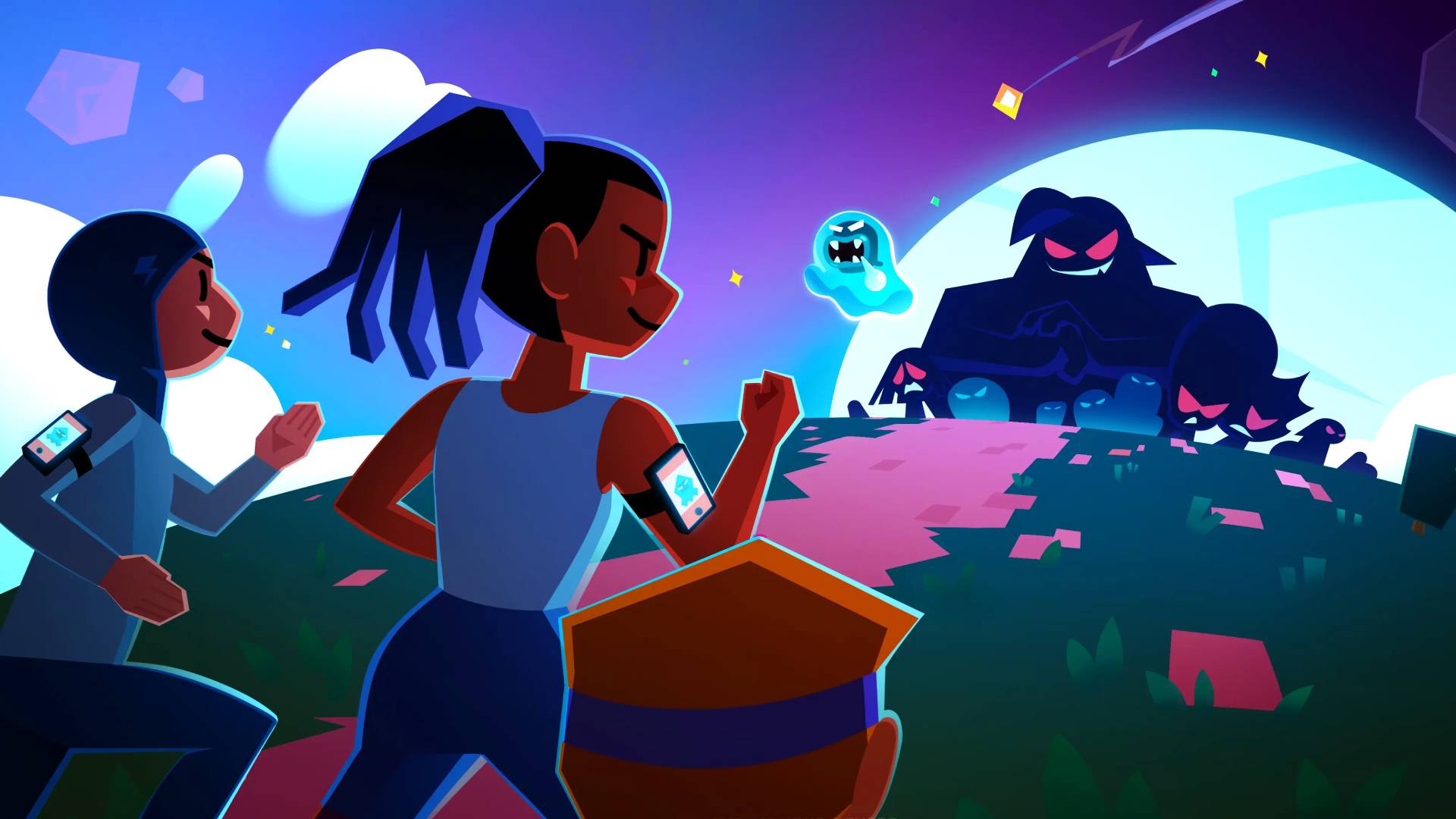Run Legends is the frontrunner of a new generation of fitness games
Giving Pokémon GO a run for its money

I grip an iPhone tightly as a creature on the screen mocks me. I'm used to defeating enemies in mobile FPS games or tapping to clear clicker game-style bosses. But this will be the first time I exert physical energy in a mobile game boss battle beyond clicking or swiping. As I jog through a corridor, phone in hand, a meter on the screen tracks my speed and location as I chip away at the enemy's HP. With continuous movement, I defeat my enemy. Once again, a new foe taunts me to leverage my movement to defeat them.
Run Legends is a forthcoming mobile game that encourages movement-based gameplay. In some ways, it's a natural evolution of the gaming-fitness hybrid that garnered worldwide interest upon the launch of Pokémon Go. I demoed the forthcoming release, launching April 24 for iPhone and iPad, at a recent Apple Gaming showcase in New York City. The experience puts the player and friends up against enemies in an experience that encourages running and movement to defeat common enemies. As far as I've seen, these enemies include a monster and an old, cranky grandmother. Teammates can work together to defeat enemies and protect one another despite being continents apart.
The game is the most recent project from developer Jenny Xu, CEO of Talofa Games. Xu is an avid runner, hence her passion for developing a game that could combine traditional mobile gaming elements with lesser-used movement-based features. The game uses Apple's CoreLocation and CoreMotion to track the GPS movement to calculate the run speed and time, Xu tells me. It also leverages 5G technology to connect players and Apple Spatial Technology to contextualize audio to feel more social.
Real-time biometric data would unlock so many more cool experiences and game designs customized to the player's body
Jenny Xu
But its current iteration is the beginning of an ambitious plan to build a game that merges Apple's mobile gaming functions with its fitness offerings. Xu hopes to eventually incorporate technology to leverage Apple Watch data, allowing her to use elevation and heart rate data for greater personalization. She's also excited about using AR to enable safe visual experiences for players, which could provide a particularly rich experience if rumors of a forthcoming Apple AR headset prove true.
"I believe it's a combination of hardware and content," Xu says of her impressions of the future of innovation in the mobile gaming space. "The more powerful sensors like GPS and accelerometer and location get, the more accurate positioning data will be so that you can be even more precise with movements in the game. Once you can detect things like heart rate, oxygen level, and even more real-time biometric data, that would unlock so many more cool fitness-based experiences and possible game designs customized to the player's body."

Room to grow
Since Pokémon Go's launch in 2016, the mobile gaming community has been hungry for the next hit game that draws mass appeal while leveraging innovative ways to use player devices. Although down from its peak of 232 million active players in 2016, Pokémon Go still boasts more than 79 million active players who use the app to walk, explore, and discover their communities while collecting and evolving Pokémon.
Except for games like Pokemon Go and collaborative AR walking game Pikmin Bloom, both from Niantic, movement-based mobile games are still rare relative to FPS, puzzle, and strategy games. But Niantic has figured out something others haven't, and it's telling that in 2019, Xu's team earned the Niantic Beyond Reality Contest grand prize and earned more than $300,000 toward the development of Run Legends.
Sign up for breaking news, reviews, opinion, top tech deals, and more.
Pokémon Go proved there are solid opportunities to garner wide appeal by leveraging emerging tech to develop mobile games that use more than basic functions. It combines walking and exploration with the interactive ability to “catch" Pokémon in an augmented reality backdrop. Gimmick or not, AR effects contributed to its mass appeal. While location-based fitness games are only one area in which innovation will impact how we play mobile games in the future, there are many other opportunities for such games to leverage movement, voice recognition, AR, and other nontraditional features to create unique gameplay experiences. Combined with machine learning feedback cycles that leverage artificial intelligence, these emerging technologies can open the door to a new world of possibilities.
With the prominence of fitness-oriented mobile content, one can only guess why there remains such a disconnect between mobile games and fitness apps, many of which incidentally rely on gamification to retain users. Run Legends may not be the next big hit, but games like this pave the way for mobile gaming innovation. While it seems unlikely the game could reach the unparalleled success of Pokémon Go, Xu joins the ranks of true innovators leveraging mobile tech to create experiences that speed past any we’ve seen before.
